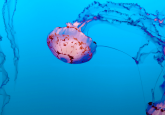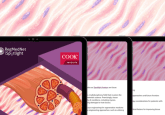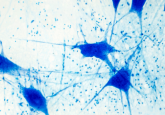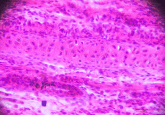Branching out: in vitro angiogenesis advancements

In this interview, we spoke with Iris Bischoff-Kont about the latest advancements in angiogenesis research and their potential applications in regenerative medicine. Dr Bischoff-Kont also explores the challenges faced in translating angiogenesis research findings into clinical therapies and the importance of understanding the crosstalk between angiogenesis and other processes like inflammation.
This interview is part of the RegMedNet In Focus on angiogenesis. Discover expert opinions on this topic by visiting our feature homepage.
 Iris Bischoff-Kont is a Product Manager at PromoCell (Heidelberg, Germany), a leading manufacturer specializing in a wide range of human primary cells, including stem cells, blood and immune cells, and cell culture media systems.
Iris Bischoff-Kont is a Product Manager at PromoCell (Heidelberg, Germany), a leading manufacturer specializing in a wide range of human primary cells, including stem cells, blood and immune cells, and cell culture media systems.
Before joining PromoCell, Iris served as a Project Manager in the research and development department of an in vitro diagnostic company where she was accountable for spearheading new product development initiatives. Prior to her industry roles, Iris held a position as a scientist at the Department of Pharmacy at Goethe University Frankfurt (Germany), starting in 2014. During this time, her research centered on characterizing novel anti-inflammatory and anti-angiogenic natural compounds derived from plants and microorganisms, with a focus on elucidating their underlying molecular mechanisms. Before her tenure at Goethe University, Iris pursued her PhD in the field of Tissue Engineering and Regenerative Medicine at the Institute of Pathology, University Medical Center of the Johannes Gutenberg University Mainz (Germany). Her doctoral research primarily involved the development of co-culture systems aimed at vascularizing bone substitute materials.
Since 2023 she is responsible for the lifecycle of the PromoCell product portfolio and for the strategic planning, development and marketing of products relevant to cell culture and cell biology.
Can you discuss some of the most promising advancements in angiogenesis research and their potential applications in regenerative medicine?
Angiogenesis research has seen several promising advancements with significant implications for regenerative medicine.
One promising approach is the use of growth factors such as vascular endothelial growth factor (VEGF) and fibroblast growth factor (FGF) to stimulate angiogenesis. Researchers are exploring various delivery methods for these growth factors, including gene therapy, biomaterial-based delivery systems or cell-based therapies. These approaches have potential applications in treating conditions like peripheral artery disease, ischemic heart disease or diabetic ulcers.
Angiogenesis research in biomaterials is crucial for tissue engineering and regenerative medicine as it provides structural support and promotes tissue regeneration. Researchers are developing biomaterials with angiogenic properties that can stimulate the formation of new blood vessels. These materials may incorporate growth factors, peptides or other bioactive molecules that mimic the extracellular matrix and create a pro-angiogenic microenvironment. These approaches have potential applications in wound healing or organ regeneration to facilitate and accelerate regenerative processes by promoting the supply of nutrients and oxygen in the new tissue.
A different approach is the use of microfluidic organ-on-a-chip platforms that mimic the physiological microenvironment of tissues and organs, enabling angiogenesis-related in vitro studies with high precision and control. These models allow researchers to investigate the complex interactions between endothelial cells, supporting cells and the extracellular matrix components during angiogenesis. Microfluidic organ-on-a-chip systems have applications in drug screening, disease modeling and personalized medicine, offering insights into angiogenesis-related disorders and therapeutic interventions.
Overall, these advancements in angiogenesis research hold great promise for addressing unmet medical needs in regenerative medicine, including tissue repair, vascularization of engineered constructs or treatment of ischemic diseases.
What are the main challenges researchers face when translating angiogenesis research findings into clinical therapies for tissue regeneration?
Translating angiogenesis research findings into clinical therapies for tissue regeneration poses several challenges that researchers must address. The multiple and well-balanced stages of angiogenesis imply a high degree of complexity involving multiple signaling pathways, cell types and extracellular matrix components. Understanding the mechanisms that regulate angiogenesis in various tissues and disease states is essential for developing effective therapeutic interventions.
Moreover, angiogenic responses can vary significantly depending on the tissue microenvironment, physiological conditions and pathological context. Researchers need to consider tissue-specific factors when designing angiogenesis-based therapies to ensure optimal outcomes and minimize potential adverse effects.
With regard to the development of angiogenesis-based therapies that target endothelial cells, the safety and efficacy is paramount for clinical translation. These therapies must demonstrate sufficient efficacy in promoting tissue regeneration while minimizing off-target effects, such as excessive vessel growth, aberrant angiogenesis or cytotoxicity.
Also, the effective delivery of angiogenic factors, cells or biomaterials to the target tissue is critical for achieving therapeutic outcomes. Researchers face challenges in developing delivery systems that provide controlled release, spatial localization and sustained bioactivity and bioavailability to promote angiogenesis without causing systemic toxicity or immune reactions.
The host immune response plays a crucial role in modulating angiogenesis and tissue regeneration. Immune cells can either promote or inhibit angiogenesis depending on their activation state and cytokine secretion profile. Researchers need to consider the immune response when developing angiogenesis-based therapies and ensure compatibility with the host immune system.
Achieving long-term stability and integration of newly formed blood vessels into the surrounding tissue is essential for the success of angiogenesis-based therapies. Researchers need to develop strategies to promote vascular maturation, functional perfusion and integration with host vasculature to ensure sustained tissue regeneration and functionality.
Can you elaborate on the importance of vascularization in tissue engineering and the strategies employed to promote angiogenesis within engineered tissues?
Vascularization is crucial in tissue engineering because it ensures the delivery of oxygen, nutrients and regulatory signals to cells within engineered tissues, as well as the removal of metabolic waste products. Without adequate vascularization, engineered tissues may suffer from hypoxia, nutrient deprivation and impaired cellular function, limiting their viability, integration and functionality. The pre-vascularization of implantable scaffolds or matrices before implantation might result in enhanced vascularization, integration and perfusion in vivo, leading to improved tissue survival and functionality.
Of note, supporting vascular network formation accelerates and facilitates the integration of engineered tissues with the host vasculature, enabling the exchange of cells, growth factors and signaling molecules between the graft and the surrounding tissue. Proper vascularization enhances tissue engraftment, host integration and long-term stability. Supporting tissue functionality also plays a pivotal role by regulating blood flow, maintaining tissue homeostasis and facilitating dynamic responses to physiological stimuli. Vascularized tissues exhibit enhanced functionality, responsiveness and adaptability compared to avascular constructs.
Strategic interventions to address these aspects include the use of suitable biomaterials such as hydrogels, scaffolds and matrices that can be engineered to mimic the extracellular matrix and create a supportive microenvironment for angiogenesis. These materials may incorporate bioactive molecules, growth factors or cell adhesion peptides to stimulate endothelial cell proliferation, migration and vessel formation. As endothelial cells interact with supporting cells, co-culturing with other cell types such as mesenchymal stem cells, fibroblasts or pericytes can enhance angiogenesis within engineered tissues. As already mentioned, the application of growth factors, such as VEGF, FGF and platelet-derived growth factor, play key roles in regulating angiogenesis. Controlled release of angiogenic growth factors from biomaterials or delivery vehicles can stimulate vessel formation and promote vascularization within engineered tissues.
Taking biophysical stimuli into account may help researchers to develop useful approaches. Mechanical forces, shear stress and oxygen tension are important regulators of angiogenesis in vivo. Researchers can utilize bioreactors, perfusion systems and microfluidic devices to apply biophysical stimuli to engineered tissues, mimicking the dynamic microenvironment of native tissues and promoting vascular network formation.
Moreover, novel 3D bioprinting technologies enable the precise deposition of cells, biomaterials and bioactive factors to create complex, vascularized tissue constructs. By incorporating endothelial cells, supporting cells and angiogenic factors into bioinks, researchers can fabricate vascular networks within engineered tissues with spatial control and architectural precision.
Are there specific disease conditions or tissue types where angiogenesis-targeted therapies show the most promise for tissue repair and regeneration?
One of the most promising approaches is related to therapies for cardiac tissue regeneration. For instance, in ischemic heart disease, such as myocardial infarction, the blood supply to the heart muscle is compromised, leading to tissue damage and impaired cardiac function. Therapies aimed at promoting angiogenesis can help restore blood flow to the ischemic myocardium, improve tissue perfusion and enhance cardiac function.
Peripheral artery disease is characterized by the narrowing or blockage of the arteries supplying blood to the extremities, leading to reduced blood flow and tissue ischemia. Angiogenesis-targeted therapies can stimulate the growth of new blood vessels, bypassing occluded arteries and restoring blood flow to ischemic limbs, thus alleviating symptoms and promoting tissue repair. Similar to that, ischemic stroke results from a blockage of blood flow to the brain, leading to tissue damage and neurological deficits. Angiogenesis-related therapies might stimulate the growth of new blood vessels in the ischemic brain tissue, promoting tissue repair, neuronal regeneration and functional recovery following stroke.
In general, addressing impaired wound healing by angiogenesis-targeted therapies is of utmost benefit. For example, chronic wounds, such as diabetic foot ulcers, often exhibit impaired angiogenesis due to underlying microvascular dysfunction. Angiogenesis-targeted therapies can promote the formation of new blood vessels in the wound bed, enhancing tissue perfusion, accelerating wound healing and reducing the risk of complications such as infection, necrosis and amputation.
Angiogenesis-related therapies can also be beneficial for bone regeneration. It provides the necessary blood supply for osteogenesis and the delivery of osteoprogenitor cells and growth factors to the site of injury. Angiogenesis-targeted therapies can enhance vascularization within bone grafts or scaffolds, promoting bone healing and integration with the surrounding tissue.
While pathological angiogenesis is a hallmark of cancer, targeted inhibition of tumor angiogenesis has emerged as a promising strategy for cancer therapy. Anti-angiogenic agents can disrupt the formation of new blood vessels within tumors, leading to tumor regression, inhibition of metastasis and improved patient outcomes.
Promising FDA-approved examples include monoclonal antibodies against VEGF. Bevacizumab is effective against a wide range of cancer indications, while Ranibizumab is effective against macular degeneration.
How does angiogenesis interact with other processes, such as inflammation or immune response, in the context of tissue repair and regeneration?
Angiogenesis, inflammatory processes and the immune response are strongly interconnected processes that play crucial roles in tissue repair and regeneration.
Inflammation is often an early response to tissue injury, characterized by the release of pro-inflammatory cytokines, chemokines and the recruitment of immune cells to the site of injury. Immune cells such as monocytes or neutrophils release pro-inflammatory cytokines, which in turn initiate angiogenic processes such as endothelial cell proliferation and migration. When monocytes transmigrate into the underlying tissue they differentiate into macrophages. Here, macrophages or neutrophils release pro-angiogenic factors such as VEGF, FGF and matrix metalloproteinases, which promote angiogenesis and tissue repair.
Therefore, the immune response is intricately linked to angiogenesis, as immune cells play dual roles in regulating blood vessel formation and function. Macrophages, in particular, are key regulators of angiogenesis, exhibiting both pro-angiogenic (M2-like) and anti-angiogenic (M1-like) phenotypes depending on the microenvironment. Pro-inflammatory cytokines released by immune cells can stimulate angiogenesis, while anti-inflammatory cytokines may inhibit it. The balance between pro- and anti-inflammatory signals determines the extent and outcome of angiogenesis in tissue repair. In the physiological situation of tissue repair or wound healing the interaction between immune cells and the vascular endothelium is terminated at a certain stage. However, in inflammation-related disorders and autoimmune diseases, such as inflammatory bowel disease, rheumatoid arthritis or psoriasis, this highly regulated process is persistent and uncontrolled, leading to severe tissue damage.
Overall, angiogenesis, inflammation and the immune response are interconnected processes that collaborate to orchestrate tissue repair and regeneration. Understanding the crosstalk between these pathways is essential for developing effective therapeutic strategies to promote tissue healing and restore homeostasis in various pathological conditions.
How do you see the field of angiogenesis research evolving in the next decade and what impact will this have on regenerative medicine practices?
In the next decade the field of angiogenesis research is likely to undergo significant advancements driven by technological innovations, interdisciplinary collaborations and a deeper understanding of the molecular mechanisms underlying vascular biology. These developments are expected to have a profound impact on regenerative medicine practices.
Using advanced techniques and by molecular profiling and high-throughput screening, researchers will identify novel therapeutic targets. Precision therapies that selectively modulate specific signaling pathways involved in vascular growth and remodeling can be addressed. This targeted approach will enable more effective and personalized treatments for angiogenesis-related disorders, including ischemic diseases, cancer and chronic wounds.
In addition, the integration of biomaterials, bioengineering and 3D printing technologies can enable the fabrication of vascularized tissue constructs with precise control over structure, composition and functionality. These engineered tissues mimic the native tissue microenvironment more closely, promoting vascularization, host integration and functional regeneration in vivo. Cell-based therapies, particularly those utilizing stem cells and endothelial progenitor cells, will continue to be explored for their potential to promote angiogenesis and tissue regeneration. Advances in cell isolation, expansion and delivery techniques will enhance the efficacy and safety of these therapies, paving the way for clinical translation in conditions such as ischemic heart disease, peripheral artery disease or diabetic ulcers.
Overall, the evolving landscape of angiogenesis research is poised to revolutionize regenerative medicine practices by offering new therapeutic avenues, personalized treatment strategies and transformative technologies for tissue repair and regeneration. By harnessing the intrinsic regenerative potential of blood vessels, researchers will continue to advance the frontiers of medicine and improve outcomes for patients with a wide range of medical conditions.
The opinions expressed in this interview are those of the interviewee and do not necessarily reflect the views of RegMedNet or Taylor & Francis Group.
In association with






